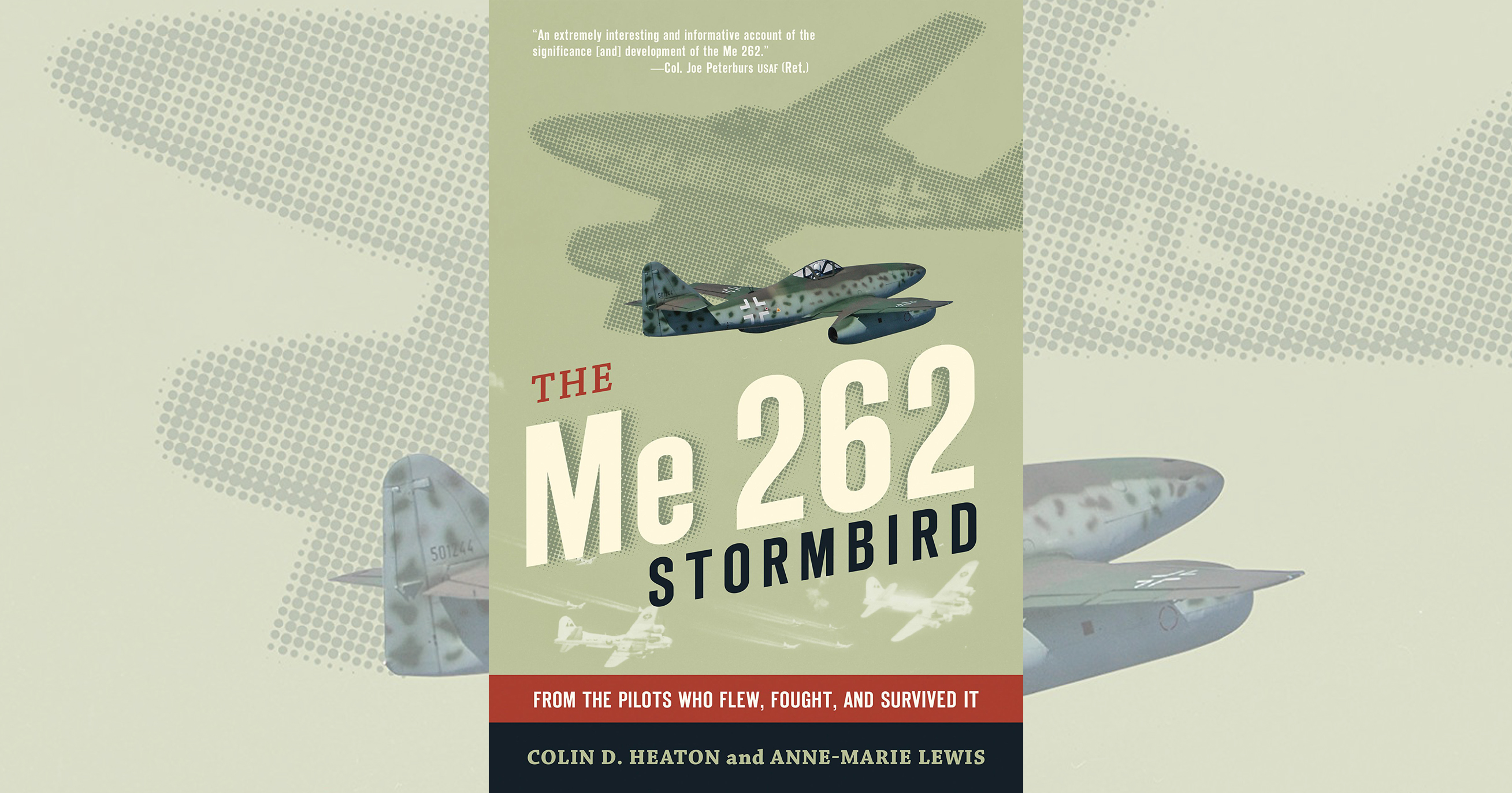The ME 262 Stormbird: From the Pilots Who Flew, Fought, and Survived It by Colin D. Heaton and Anne-Marie Lewis, Zenith Press, Minneapolis, Minn., 2012, $30
This is both an intensely factual book about the famed Messerschmitt and a love story. The love story comes in from the authors’ obvious fascination with the short-lived Stormbird, the world’s first operational jet fighter. There have been many other books on the subject, but none has been as packed with facts and figures as this one, rendered for the most part in first-person accounts.
Colin Heaton and Anne-Marie Lewis spent years researching their book, interviewing any Germans they could find with experience in designing, building, flying and maintaining the aircraft. They read virtually everything written about the Me-262, and secured permission to quote from those works. The German viewpoint is balanced by numerous quotes from Allied pilots who faced the Me-262 in combat.
Heaton and Lewis begin with an analysis of why Germany was the first to field a jet fighter, then chronicle its development and introduction to combat. They summarize the design, maintenance and logistical problems inherent in such a revolutionary aircraft, and explore how the Me-262 was employed as a fighter and bomber under Walter Nowotny, Adolf Galland and Johannes Steinhoff, all of whom led special units staffed by the greatest German aces.
The underlying tragedy, of course, is that the Me-262 was used in an evil, and losing, cause—at a time when the Allies dominated the air. Dedicated German pilots launched attacks in handfuls of Me-262s against raids by 1,000 Allied bombers and several hundred Allied fighters. It was a hopeless task, but their frustration was mitigated by the fact that they were flying the best fighter of the war, a form of “life insurance” for them.
Even if you’re an Me-262 expert, you’re certain to find much that is new here. It’s particularly interesting to read how various German pilots learned to use it in combat. There are plenty of comparisons with older fighters—the Me-109 and Fw-190—as well as the new, equally advanced Arado Ar-234.
If all this sounds intriguing, this is certainly the book for you. But the enthusiasm of the authors for facts, and their search for quotations on each and every incident mentioned, might give casual readers pause. There’s a good bit of repetition, and also a tendency to include facts for facts’ sake. Individual aircraft are often identified by full designation, work number and unit markings. The same sentence might also include the name, rank and decorations of the pilot, with other details of his past or future actions. As a result, some sentences run as long as eight lines. If you’re unfamiliar with the Me-262, you might first read a shorter account, such as the one in William Green’s Warplanes of the Third Reich. With that foundation, The Me 262 Stormbird will be far more understandable.
Originally published in the November 2012 issue of Aviation History. Subscribe today!





